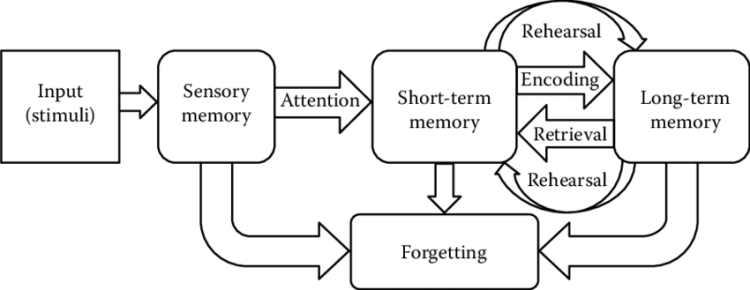Learning and memory formation are fundamental processes that shape our understanding of the world and our interactions within it. Recent advancements, particularly in the study of synaptic plasticity, have shed light on how critical proteins like AMPARs play a central role in these cognitive functions. By leveraging innovative memory techniques, researchers are now developing therapies aimed at addressing neurological disorders, including treatments for dementia. Insights into the mechanisms of memory formation through refined mappings of brain activity promise to enhance our grasp of educational strategies and therapeutic practices alike. As we continue to explore the intricate dynamics of synaptic connections, we edge closer to tackling challenges posed by cognitive decline and memory loss.
The intricate relationship between acquisition of knowledge and the retention of information can be described as the mechanisms of cognition and recall. In recent times, breakthroughs in understanding how brain synapses adapt and alter have provided significant context into the process of information storage and retrieval. Techniques to enhance memory retention have become increasingly sophisticated, revealing the essential roles of proteins such as AMPARs in reinforcing these processes. This research not only illuminates the resilience of the brain in the face of disorders like dementia but also opens pathways for therapeutic approaches to mitigate the effects of cognitive decline. By examining the structure of memory and its neurological foundations, we can better grasp how to support learning and memory in our daily lives.
Understanding Memory Formation and Learning
Memory formation is an intricate process that relies heavily on the dynamics of neuronal interactions. At the core of this process lies synaptic plasticity, the ability of synapses to strengthen or weaken over time, which directly influences learning capabilities. With groundbreaking tools like EPSILON, researchers are now able to visualize the molecular players involved in memory formation, specifically focusing on proteins such as AMPARs. These proteins act as critical mediators within synapses, enabling the brain to adapt and respond to new experiences, a fundamental aspect of learning.
The precision with which EPSILON tracks synaptic changes sheds light on the mechanisms underlying the creation and retrieval of memories. By observing how synaptic structures alter in response to different learning tasks, scientists can glean insights into the rules that govern memory storage. This understanding not only enhances our knowledge of learning mechanisms but also paves the way for therapeutic interventions for neurological conditions that disrupt these processes.
Frequently Asked Questions
How do memory techniques relate to learning and memory formation?
Memory techniques, such as mnemonics and visualization, enhance learning and memory formation by utilizing cognitive strategies that engage the brain’s natural processes. These techniques can strengthen synaptic connections, promoting better retention and recall of information.
What role do AMPARs play in learning and memory formation?
AMPARs, or alpha-amino-3-hydroxy-5-methyl-4-isoxazolepropionic acid receptors, are crucial for synaptic plasticity, which is the brain’s ability to strengthen or weaken synapses based on experience. This modulation directly impacts learning and memory formation, as AMPARs facilitate communication between neurons.
What is synaptic plasticity and how does it impact learning and memory formation?
Synaptic plasticity refers to the dynamic changes in strength and efficacy of synaptic connections in the brain, which are essential for learning and memory formation. It allows the brain to adapt by reinforcing pathways related to new experiences, thus improving cognitive capabilities.
Can understanding neurological disorders improve learning and memory formation techniques?
Yes, insights into neurological disorders, such as dementia, can inform the development of targeted approaches to enhance learning and memory formation. By studying the underlying synaptic mechanisms affected in these conditions, researchers aim to improve therapeutic strategies that facilitate better cognitive function.
How does EPSILON mapping contribute to our understanding of learning and memory formation?
The EPSILON technique offers unprecedented insights into the synaptic architecture involved in learning and memory formation by mapping the distribution and movement of key proteins like AMPARs. This advanced understanding can lead to new therapeutic innovations for enhancing memory and addressing deficits caused by neurological disorders.
What implications does synaptic dysfunction have for memory formation in dementia patients?
Synaptic dysfunction in dementia patients can severely hinder memory formation and retrieval, as the inability to strengthen or maintain synaptic connections disrupts normal learning processes. Understanding these mechanisms is crucial for developing effective treatments for memory impairment in dementia.
What advancements are being made in the treatment of dementia related to learning and memory formation?
Recent advancements include the use of molecular mapping techniques like EPSILON to identify the precise synaptic changes that occur during memory formation. These discoveries may pave the way for new treatments that target the underlying synaptic mechanisms disrupted in dementia.
| Key Points | Details |
|---|---|
| New Technique | Harvard researchers developed a method to map the molecular foundations of learning and memory. |
| Significance | The technique could lead to new therapies for disorders like dementia. |
| Methodology | The technique, named EPSILON, observes synaptic plasticity through fluorescent labeling and microscopy. |
| Role of Synapses | Synaptic connections are crucial for processing and storing memories. |
| Key Proteins | AMPARs play a critical role in synaptic strength and memory formation. |
| Observations | EPSILON enables high-resolution tracking of protein movements crucial for memory. |
| Potential Applications | Future applications may help in understanding cognitive functions and memory impairments. |
Summary
Learning and memory formation are central to understanding how we process information and retain experiences. The groundbreaking technique developed by Harvard researchers, called EPSILON, sheds light on the molecular architecture of synapses, showcasing their role in learning and memory. This method allows scientists to observe synaptic behavior with remarkable precision, offering new insights that could lead to novel treatment strategies for conditions such as dementia. By mapping synaptic plasticity, researchers can better understand how memories are formed and stored, providing hope for progress in therapeutic approaches to memory disorders.
